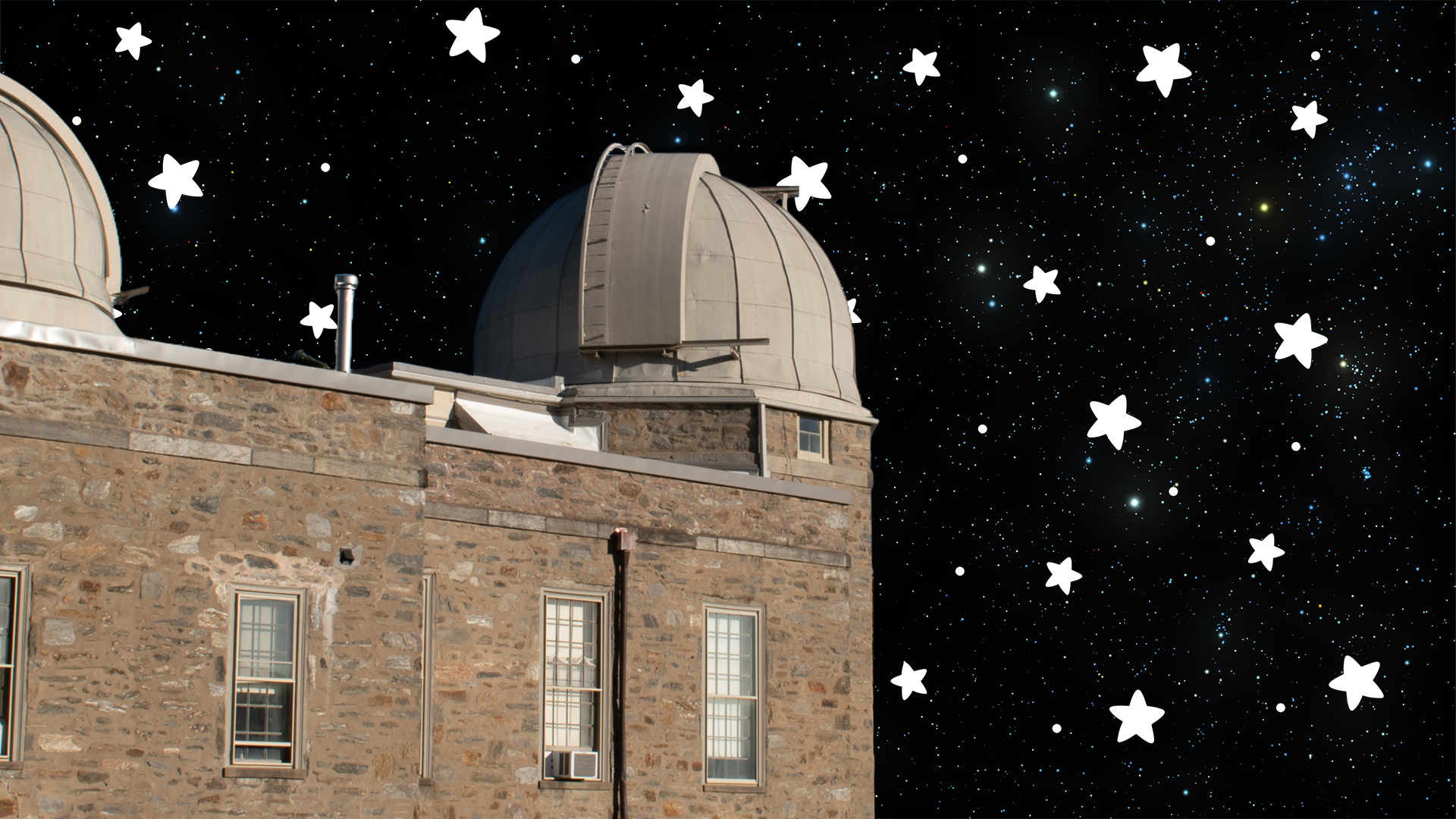On the rainy evening of Feb. 15, Bi-Co students and faculty, as well as wider community members, gathered at Haverford’s Strawbridge Observatory for the Physics and Astronomy department’s Public Observing Night. The observatory’s windows glowed a warm yellow through the hazy weather, inviting guests into the observatory’s surprisingly cozy interior to learn more about its inner workings.
The evening’s activities consisted of two presentations given by students, one explaining how light works and the other being an informal quiz-show format providing information on space. The second presentation also featured a cameo from the beloved Vera Rubin, a Haverford black squirrel stuffed animal named after a female astronomer who made large advances in the field.
While much of the event focused on demystifying elements of astronomy and the observatory which are often confusing to the non-scientifically inclined, there were also less academically focused parts of the evening. Walter Smith, Professor and Chair of Physics and Astronomy, serenaded the crowd with a ballad telling the tale of an inter-planet love story.
The event organizers also guided participants through a short craft which they dubbed fizzy planets. Each attendee mixed together baking soda, water and food coloring to create a sort of dough which could be shaped into a sphere to represent a planet. Organizers then poured vinegar over the planets to make them fizz up. This was meant to very simply represent real types of reactions that happen in space.
Throughout the night, visitors were invited to visit the observatory’s 16 inch telescope. Due to the weather, it was not actively being used, however, there was still plenty to see. As I ascended the stairs, the air got increasingly colder, a sign of the observatory dome’s thin metal and lack of insulation. Up here, visitors could view past images taken using the telescope, many of which were created as part of student projects. Elevated on a red painted wooden platform is the main focus of the dome, the telescope. Here, one astronomy student explained the elements of the telescope, giving insight into how it is used in classes.
Melanie Santiago, a Haverford senior Physics and Astronomy major, spoke with the News, emphasizing that it is designed to make Astronomy more accessible. “I think I really hone in on the accessibility part because I think astronomy and physics can be really scary, so this is a fun way for people — in any department — if you’re a student or [in] any job if you’re an adult, to come here and be like, okay I’m gonna learn something new today and do it in a chill environment.”
The next public observing night will be March 22.
